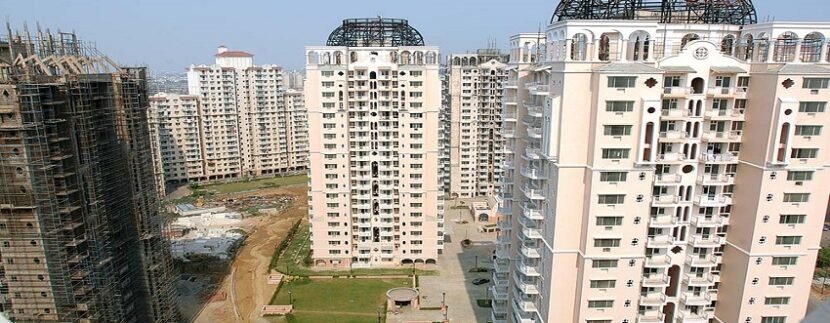A Rising Force On Icarus Dreams

Just a few months back, the nation appeared to have overcome the Covid crisis that began in early 2020, and was coming out stronger, with the number of active as well as new cases at their lowest levels in several months, and with the economy gradually emerging from lockdown. Then, seemingly out of nowhere, the second wave of the pandemic struck the country, with over four lakh daily cases reported every single day at its peak.
A similar story played out simultaneously in the real estate sector, where, at the beginning of this year, it seemed the worst was over and green shoots of revival were visible. The confidence in the sector was even stronger, considering it was one which did not suffer as much as the rest of the economy during the first wave. It was thus unanticipated that within a few months, real estate would again be staring at a major crisis. However, that is exactly where it finds itself now.
That the sector is grappling with a longer term crisis, also means there are a lot of opportunities for buyers in the market. Prices of homes have either remained constant or have seen marginal cuts, mainly due to lack of demand and huge supply of unsold inventory. To revive the ailing sector and boost demand for homes, the government has also taken a slew of policy measures over the years to make home-buying a more attractive financial decision. This means there are ample tax benefits available when one decides to purchase a home. To add to that, many states have cut stamp duty and have even allowed builders to sell houses at a price much below circle rates. Interest rates on home loans are also at a record low, with Reserve Bank of India opting to keep the rates unchanged in June as well, while also maintaining an accommodative policy stance, to keep room for further rate cuts going forward.
Taking all these circumstances together, one can conclude that we have a sort of buyers’ market right now, with most market conditions favourable to those who decide to buy a home at this time. However, the second pandemic wave has brought fresh headwinds which need to be taken into account. The recent inflation data is not very promising. The Consumer Price Index has surged to a six-month-high in May, with a sharp rise from 4.23 per cent to 6.3 per cent, outside the RBI’s comfort zone of 2-6 per cent. Meanwhile, the Wholesale Price Index showed inflation of almost 13 per cent in May, the highest in the current series. With inflation on a rise, RBI may not have room to keep policy rates at current levels for very long, so there might soon be a rate hike if inflation is not tamed. What this means is that while interest rates on loans are low right now, there is a possibility of an upward revision going forward, given the inflationary forces at play.
Moreover, inflation is a double whammy on the real estate sector because rising prices of raw materials like cement and steel also lead to rise in construction costs, which are eventually passed on to the consumer. According to real estate body Credai, prices of homes may be low at the moment, but with construction cost going up by 10-20 per cent, they could see a rise in the medium to long term.
“Prices of cement and steel have gone up sharply in the last one year. There is only a limit to which developers can absorb this kind of rise in construction cost. They would be forced to increase the cost of units, and in the medium to long term, the price of real estate is bound to go up,” said Credai President Harsh Vardhan Patodia. He added that while the existing customer may be shielded from this price hike, the rates may go up for new sales.
It is not the just rising cost of raw materials that has impacted the realty sector. The second Covid wave also led to labour shortages, resulting in delay in construction, which may get reflected in extended deadlines and higher costs. According to a recent industry report, 92 per cent of developers faced labour shortage on their sites while 83 per cent are working below 50 per cent capacity since the onset of the second Covid wave. It is natural, then, that many of these projects will be delayed, causing more hardships for consumers. According to a Credai report, 95 per cent of developers feel their projects will be delayed, especially considering that a large number of them are not getting project approvals on time due to lockdowns and other restrictions.
According to Credai President-elect Boman Irani, the impact of the second wave on real estate has been more pronounced than the first wave, with construction cost rising by 15 per cent on average, and margins getting squeezed. “The second wave hit fast, hard and hit home,” he said.
The silver lining amid all this doom and gloom is that the pandemic has also made a large part of the population realise the importance of owning their own home, and in many cases — where many people are working from their residences, the importance of larger homes. “With work-from-home (WFH) being widely adopted, changes in home design are also on the horizon. New demands include a home office, yoga space, decks offering natural light and ventilation among other things. People are aspiring to live, exercise and entertain in new ways post-Covid,” says Amarjit Bakshi, CMD, Central Park.
The tendency was confirmed when markets opened in the first quarter of 2021. The sale of high-end homes and residences accounted for 9 per cent of the total sales in the top seven cities in the first quarter of 2021, up from 6 per cent in the first quarter of 2020, according to data from Anarock Property Consultants.
Most industry stakeholders believe there is an urgent need to extend the validity of all approvals already accorded to real estate by a few months, to compensate for the lost time due to lockdowns. In case of real estate, even after the lockdown is lifted it will take months to mobilise labour and materials, they feel.
“Though states have exempted construction activity from the lockdowns, labourers are still averse to return to their workplaces in fear of infection. There is also a cascading effect of the first wave with disrupted supply chain,” Patodia says.
These factors will have a direct impact on project timelines, leading to delays in under-construction properties, and will come under the ambit of RERA violations. Only a move to rapidly vaccinate the population, leading to decrease in infections and deaths, can restore the confidence of labour.
“Only then will the labourers return to the sites. Going by the experience of the first wave, the situation would take 6-9 months to return to normalcy,” he says.
Most industry insiders feel there is also the need for a relief package specific to the Covid-19 second wave, which could include moratorium for borrowers on existing loans on principal and interest for all loan classes. They also demand the facility of input tax credit under the Goods and Services Tax (GST), for construction of property for renting and leasing purposes. The Model Tenancy Act, which got Cabinet approval last month, would also boost supply in the rental housing segment and help in formalising rental homes.
According to Anuj Puri, Chairman of Anarock Property Consultants, this Act can fuel the rental housing supply pipeline by attracting more investors, and more rental housing stock will help students, working professionals and migrant populations to find urban accommodation (especially in exigencies like Covid-19). “Once implemented in all fairness across states, it will go a long way in formalising and stabilising the rental market, and also revive the fortunes of not just the rental market but the housing sector at large,” he says.
According to Rajat Goel, Joint MD, MRG World, the government and its policies have been supportive of the sector throughout the pandemic period, particularly with several subsidies to the affordable housing segment, which have proven to be a lifeline for the entire sector. Following the latest ‘unlock’, the sector is on the lookout for government measures that will enable it to contribute positively to nation-building. Some of the demands that must be met include an announcement of stamp duty reductions in significant markets, industry status for the sector, and one-time debt restructuring.
“In comparison with the first wave, there is more interest in real estate during the second wave. The real estate sector has also taken notes from 2020 and is employing techniques to attract buyers and investors. The most significant development has been the greater use of technology. The effective use of internet to send relevant messages has provided a fertile atmosphere for the sector to thrive,” Goel says.
***
State of the Real Estate Sector
90% Developers feel impact of 2nd wave far more intense than the 1st
92% Developers face labour shortage
95% Developers expect project delays
88% Developers say construction costs rose by over 10%
82% Developers not getting project approvals on time
77% Developers facing difficulties to service existing loans
98% Developers facing reduced customer enquires/walk-ins
95% Customers have delayed purchase decisions due to the 2nd wave
Source: outlook India
